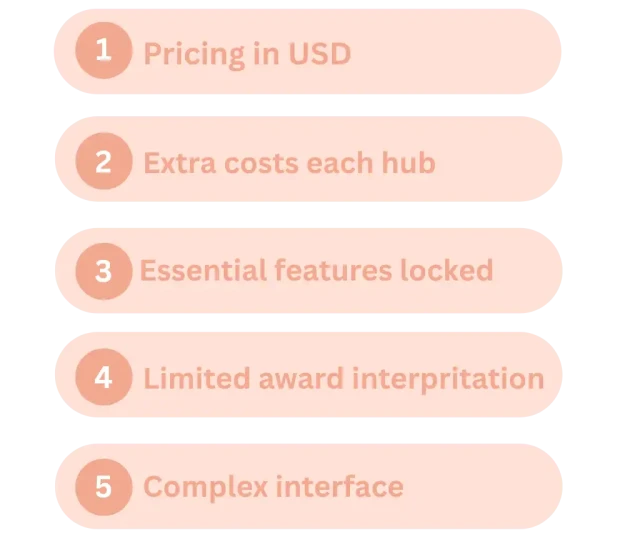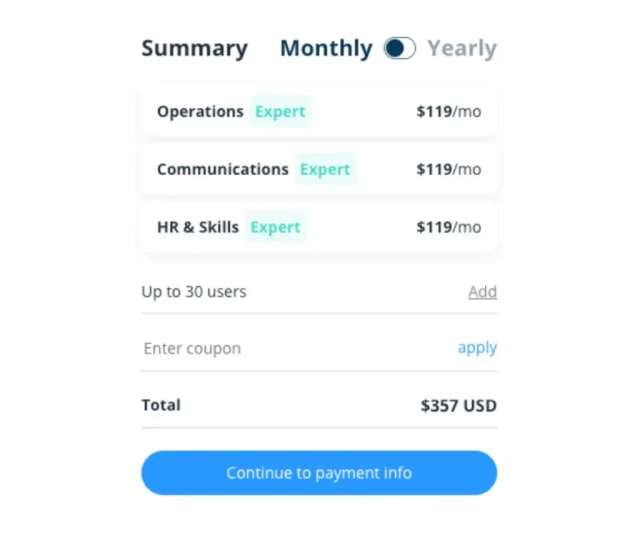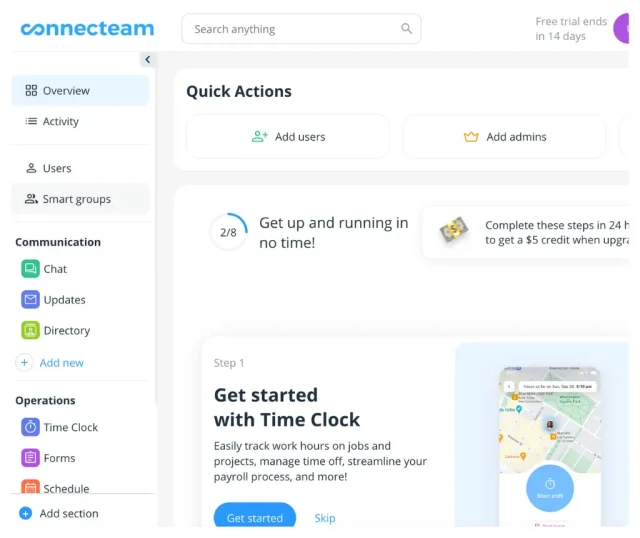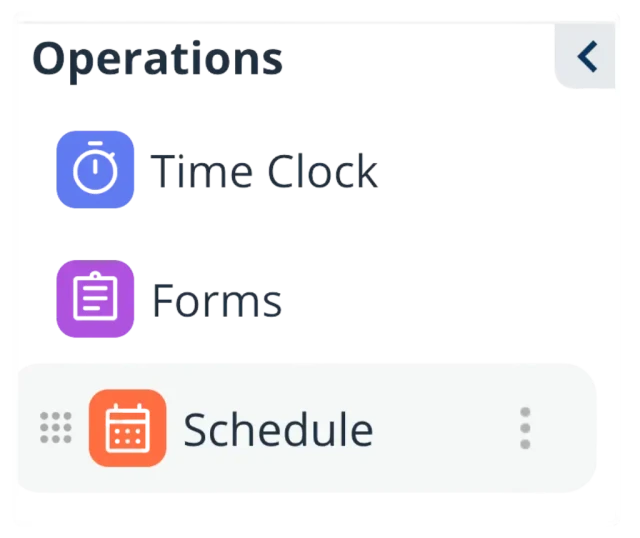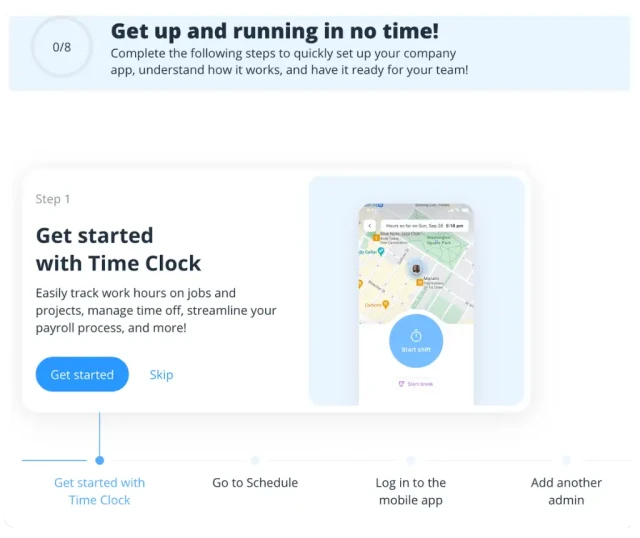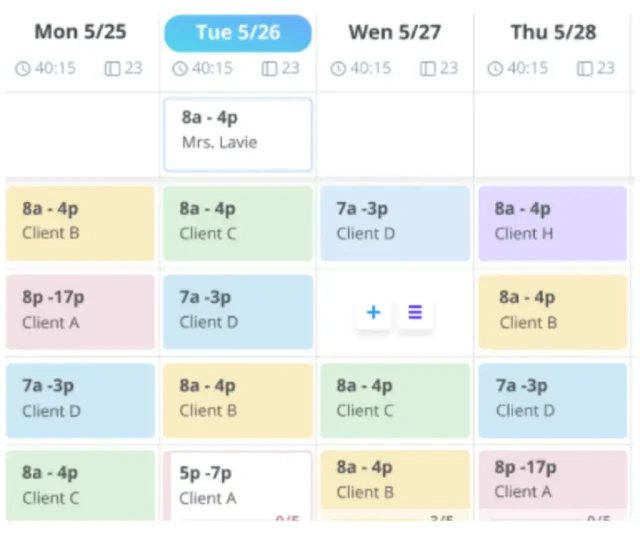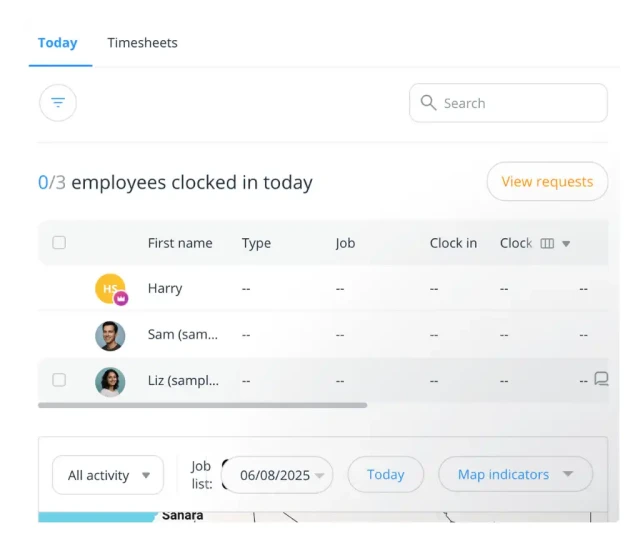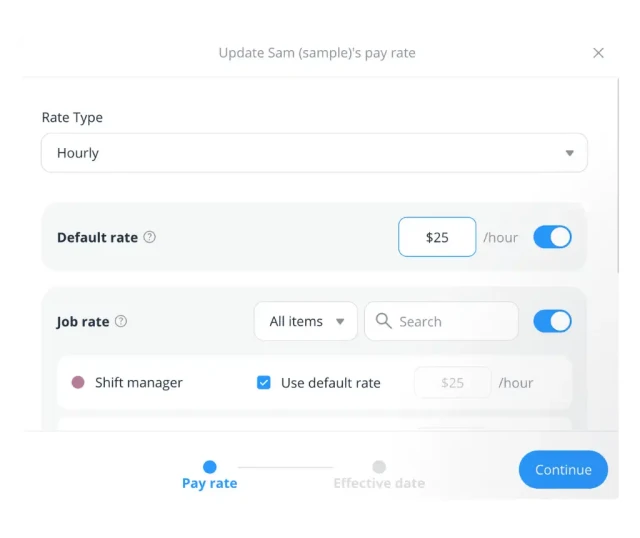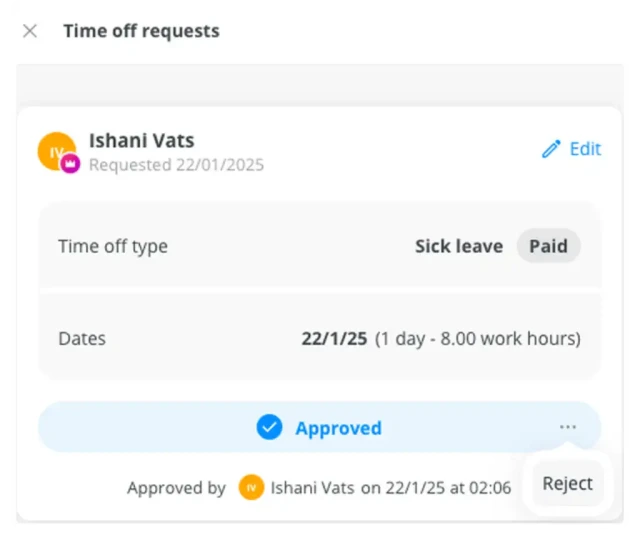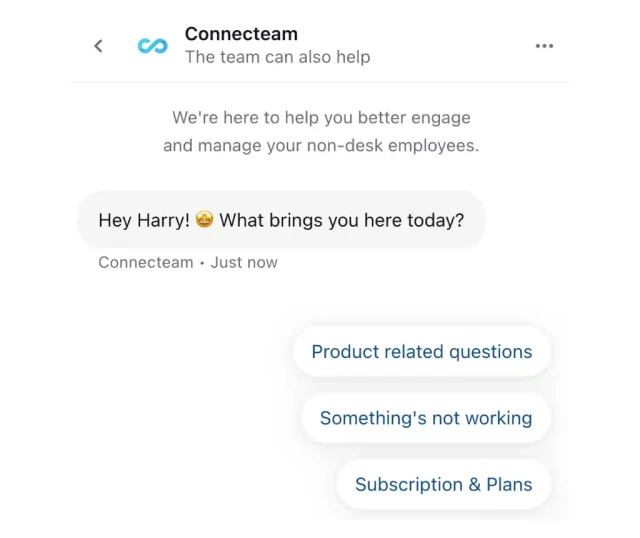The Bright Side of Connecteam — 5 Stand-Out Advantages
Connecteam is popular with desk-less teams for one simple reason: it packs an entire management toolkit into a single, mobile-first app and lets very small businesses start for free. Below, we unpack the five biggest upsides in detail and pair each with a real screenshot of the platform so you can see the UI you’d actually be working with.
1. Generous Free Tier
The
Small Business Plan is genuinely free for life for up to 10 users and unlocks every hub and feature—time clock, scheduling, chat, PTO, checklists and more. For cash-strapped cafés, trades or start-ups, that’s a risk-free way to run professional workflows without touching the credit card.
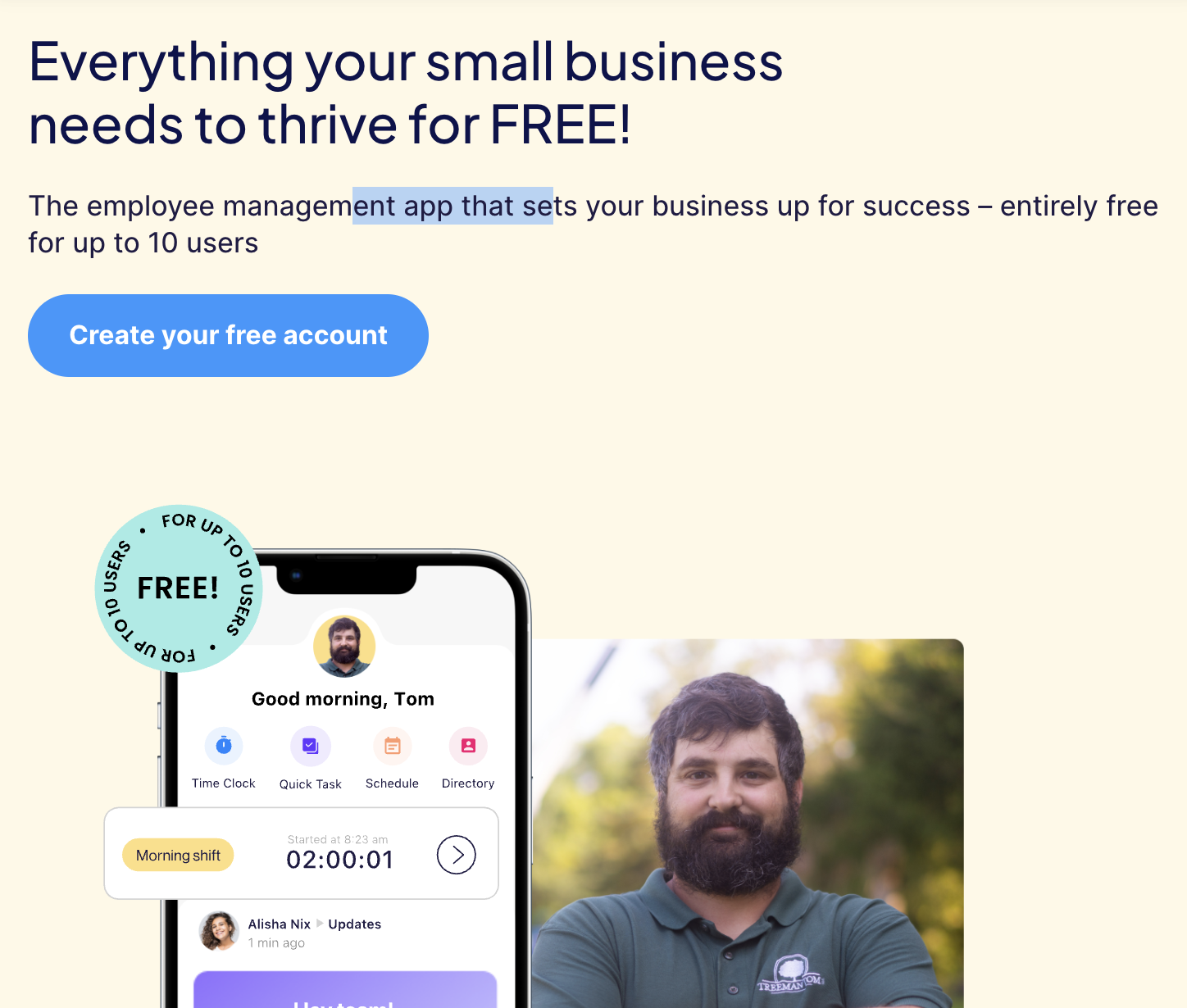
2. Flat Pricing Up to 30 Seats
Once you outgrow ten users, each hub (Operations, Communications, HR & Skills) carries a flat monthly fee that covers the first 30 seats. Because costs don’t rise per user until employee 31, seasonal operators and pilot projects can scale early staff numbers without bill shock. It’s a simple, budget-friendly ceiling many competitors don’t offer.
3. Fast, Guided Onboarding
Connecteam’s welcome wizard walks admins through adding sites, roles and their first roster in minutes, while employees receive clear prompts the moment they download the app. Managers repeatedly note that they’re “live the same day” instead of scrambling through weeks of set-up calls—great when you’re fitting software deployment around a hectic roster.
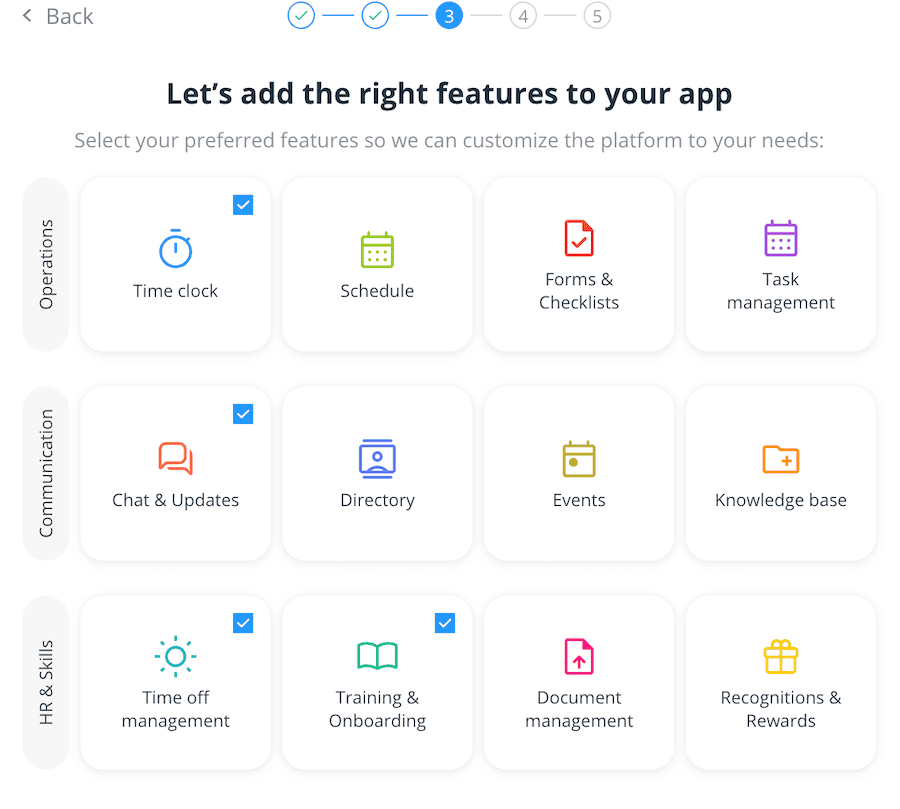 4. Broad Industry Fit
4. Broad Industry Fit
Because the platform blends GPS geofencing, roster templates, real-time chat and basic HR, it adapts smoothly from construction sites to cafés, retail chains and home-care providers. The scheduling screenshot above, for instance, shows colour-coded shifts and drag-and-drop templates that work just as well for an aged-care rota as for a weekend festival crew.
5. Wide Feature Breadth in One App
Time clocks talk to timesheets; shifts link straight to chat threads; PTO and availability rules feed directly into roster warnings. By baking these modules together, Connecteam removes the need to glue separate point solutions with brittle integrations. That tight coupling saves frontline managers hours each week and gives staff a single login for everything work-related.
Wrap-Up
If you’re a micro team or an early-stage business, Connecteam’s free-to-30-users pricing model, swift onboarding and all-in-one feature spread are hard to beat. The breadth of tools means you can clock in, schedule, chat and manage leave without ever leaving the app, while industry-agnostic design keeps it relevant whether you pour coffees or pour concrete. Just remember to scrutinise the paid tiers once you pass 30 users—but for now, the pros above are very real reasons Connecteam often makes the shortlist for frontline workforce management.
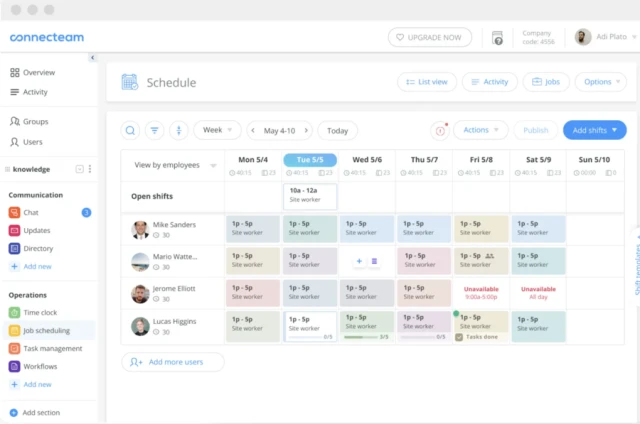
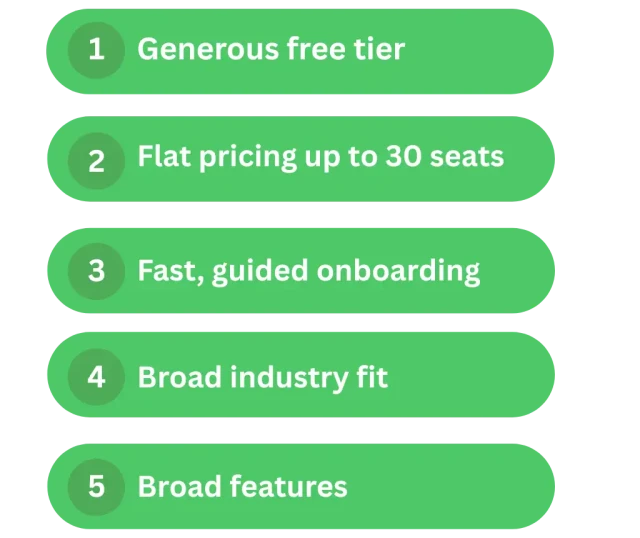

 4. Broad Industry Fit
4. Broad Industry Fit